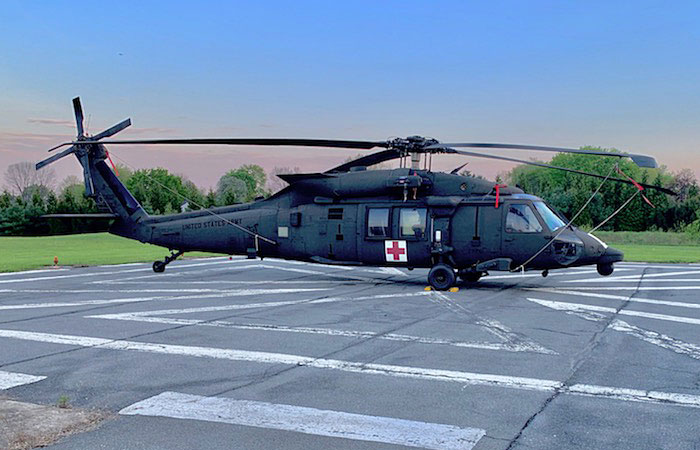USAARL: Advancing the Airborne Warfighter Through Research

The U.S. Army Medical Research and Development Command's U.S. Army Aeromedical Research Laboratory, based at Fort Rucker, Alabama, has for nearly 40 years committed itself to the advancement of Army aviation through a vast array of aeromedical laboratory research initiatives.
Today, USAARL focuses most specifically on aeromedical testing effort that merge the science of aviation with military medicine to optimize Warfighter protection and performance both in the combat space and beyond.
One of the key ways in which USAARL is advancing such research is through its use and study of the HH-60 MEDEVAC Black Hawk helicopter. The HH-60M, which comes equipped with in-flight measurement systems to monitor and record real-time aviator physiological and cognitive stressors, is one of the unique tools USAARL maintains exclusively for these purposes.
"The HH-60M is the only Black Hawk under USAMRDC's portfolio that the command has for aeromedical research; and it is arguably the only aeromedical research asset under Army Futures Command's portfolio," said Alabama native and research pilot Jason Gerstner, who serves as chief of the flight systems branch at USAARL.
The HH-60M was one of the many command-wide capabilities presented as part of USAMRDC's recent Capability Days event, which took place from April 25-28 at Fort Detrick, Maryland. The event featured more than 100 VIPs from across the U.S. military, who gathered to witness the many ways in which USAMRDC efforts – from medical research, development and various acquisition efforts – impact the resiliency of the Warfighter and the larger U.S. Department of Defense. USAARL's contribution to the effort included a display of its three research and test groups: the Enroute Care program, the Injury Biomechanics and Protection program and the Warfighter Performance program. Notable among their contributions to the event included a live HH-60M medical evacuation drill used to show the techniques and technical abilities required to transport a casualty to a higher role of care.
"Any time that we can demonstrate the research platform capabilities that aviators are flying and a medical evacuation to VIPs, USAMRDC staff – and, in this case, their family members – is pure enjoyment," said Gerstner. "By being a good steward who enjoys their profession, it's great to see that enjoyment to young kids on their face, because those are our future aviators, scientists and researchers. Giving them a small glimpse of what opportunities may exist for them goes a long way for myself and my cohorts."
Lt. Col. Jason Yellman, deputy commander of USAARL accompanied Gertsner on the 17-hour round trip flight from Alabama to Maryland and back again. Yellman brings more than 20 years of experience to USAARL as a 67 Juliet Medical Evacuation Officer and pilot.
"The backdrop of our aircraft and the presentation of examples of our research programs and test articles prompted engaging conversations leading to shared understanding on who USAARL is and what USAARL does," said Yellman, referring to the laboratory's participation in the Capability Days event. "It is always a highlight for me to spotlight world-class research and test efforts of our scientists and engineers to external leaders and peer groups in USAMRDC and across the Army and the Defense Health Agency."
This fall, USAARL will demonstrate again its capabilities in Operator State Monitoring and Environmental Sensors in Training technologies at Project Convergence 22, an event dedicated to combined and joint force operational and tactical problem solving through joint all-domain operations.














